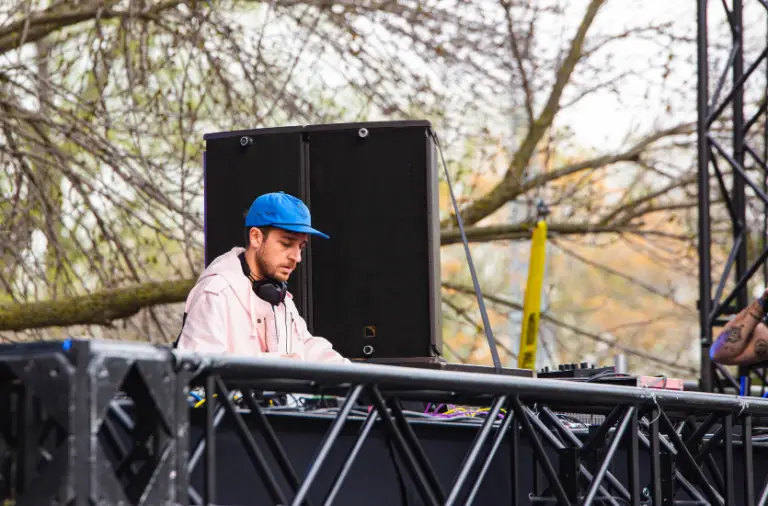The use of sound equipment in the music and audio industry has been growing rapidly, and the question of whether studio monitors can be used as PA speakers is a common one. To answer this question, it’s important to understand the fundamental differences between the two.
Table of Contents
What is the difference between a PA speaker and a monitor?
Studio Monitors: Designed to provide a flat, neutral sound representation of your mix. Used in recording studios to ensure accuracy in the production and mixing of music. Equipped with drivers that are specifically designed to provide an accurate representation of the sound being produced. In a recording studio environment, it’s important to have accurate sound representation to ensure that the mix is balanced and that every sound can be heard clearly. This is why studio monitors are designed to have a flat frequency response, meaning that they don’t enhance or color the sound in any way.
PA Speakers: Designed to enhance sound, making it louder and more dynamic for live performances and public speaking events. Equipped with drivers that are designed to produce sound at high levels, with an emphasis on low-end response and frequency range. PA speakers are designed to provide a full and balanced sound that can be heard in large spaces. They are equipped with drivers that are specifically designed to handle high sound pressure levels and to provide a dynamic sound that can be heard in large spaces.
Can I use studio monitors for live performance?
While you can use studio monitors as PA speakers in a pinch, it is not ideal. Studio monitors are not built to handle the high sound pressure levels that PA speakers can produce. They also lack the low-end response and frequency range necessary for a full and balanced sound in live performances. In live performances, it’s important to have a dynamic sound that can be heard in large spaces and a system that can handle high sound pressure levels. Using studio monitors in a live performance setting can result in a sound that is not loud enough and lacks the low-end response and frequency range necessary for a full and balanced sound.
What can you not do with studio monitors?
Cannot handle high sound pressure levels: One of the biggest limitations of using studio monitors as PA speakers is their inability to handle high sound pressure levels. Studio monitors are not built to handle the high levels of sound that PA speakers can produce, which can result in distortion or damage to the speakers.
Lack the low-end response and frequency range necessary for live performances: Studio monitors are designed to provide a flat, neutral sound representation and lack the low-end response and frequency range necessary for a full and balanced sound in live performances. This means that the sound may be lacking in bass and may not be heard clearly in large spaces.
Not designed to enhance sound: Studio monitors are not designed to enhance sound in any way, meaning that they don’t provide the dynamic sound necessary for live performances. In live performances, it’s important to have a sound system that can enhance the sound and make it louder and more dynamic.
Can you use studio monitors for house parties?
While you can use studio monitors for house parties, they are not ideal for this purpose. Studio monitors are designed to provide a flat, neutral sound representation and are not equipped to handle high sound pressure levels or provide a dynamic sound suitable for a party environment. In a party environment, it’s important to have a sound system that can handle high sound pressure levels and provide a dynamic sound that can be heard clearly in a noisy environment. Studio monitors may not provide the sound necessary for a successful party, and it’s recommended to use PA speakers instead.
Does a PA system need a subwoofer?
A PA system may or may not need a subwoofer depending on the specific needs of the performance or event. A subwoofer provides an increased low-end response and frequency range, which can enhance the overall sound of the PA system. However, some PA systems are designed to provide a full and balanced sound without the need for a subwoofer. In general, a subwoofer can be useful in providing a more dynamic sound in live performances and public speaking events, but it’s not always necessary.
Do PA speakers need an amp?
PA speakers require an amplifier to function properly. The amplifier provides the necessary power to drive the speakers and produce sound at high levels. The power needed for PA speakers depends on the specific needs of the performance or event. In general, the larger the space, the more power is needed for the PA system.
How loud should my studio monitors be?
The ideal volume for studio monitors varies depending on the specific needs of the recording studio environment. In general, studio monitors should be set at a volume that provides a balanced representation of the mix without causing distortion. It’s important to have a flat frequency response, meaning that the monitors shouldn’t enhance or color the sound in any way. The volume should be set high enough to allow every sound in the mix to be heard clearly, but not so high that it causes distortion.
Conclusion
In conclusion, while studio monitors can be used as PA speakers in a pinch, it’s not ideal. Studio monitors are designed to provide a flat, neutral sound representation, while PA speakers are designed to enhance sound, making it louder and more dynamic for live performances and public speaking events. It’s important to understand the fundamental differences between the two to make an informed decision when choosing sound equipment. It’s recommended to use PA speakers for live performances and public speaking events and to use studio monitors in recording studio environments.

